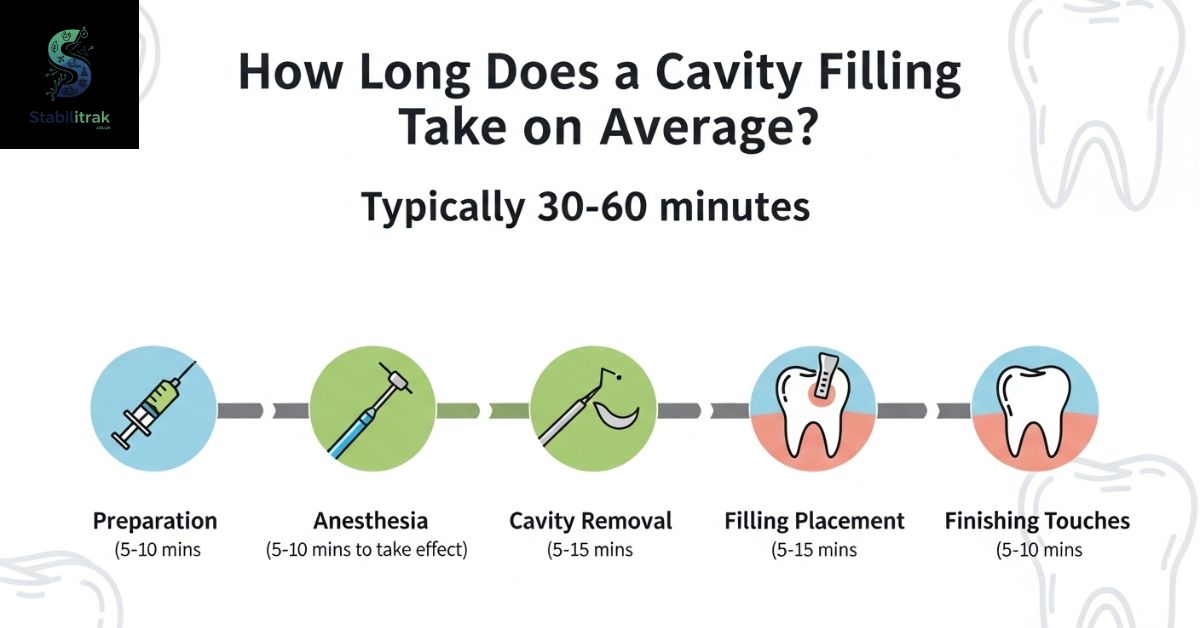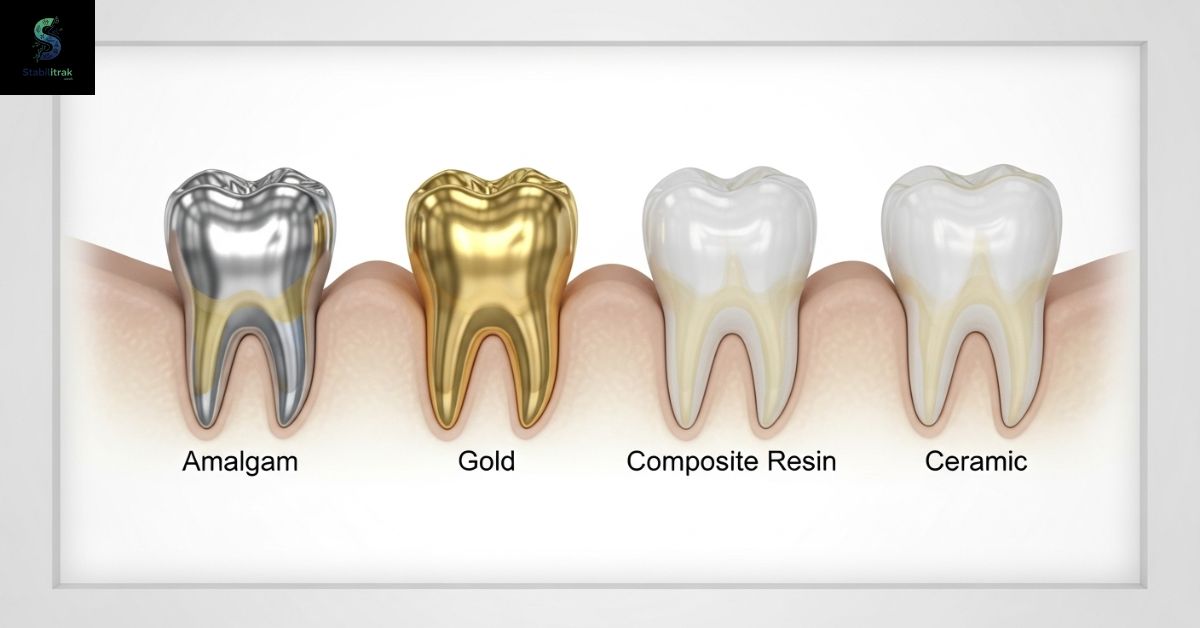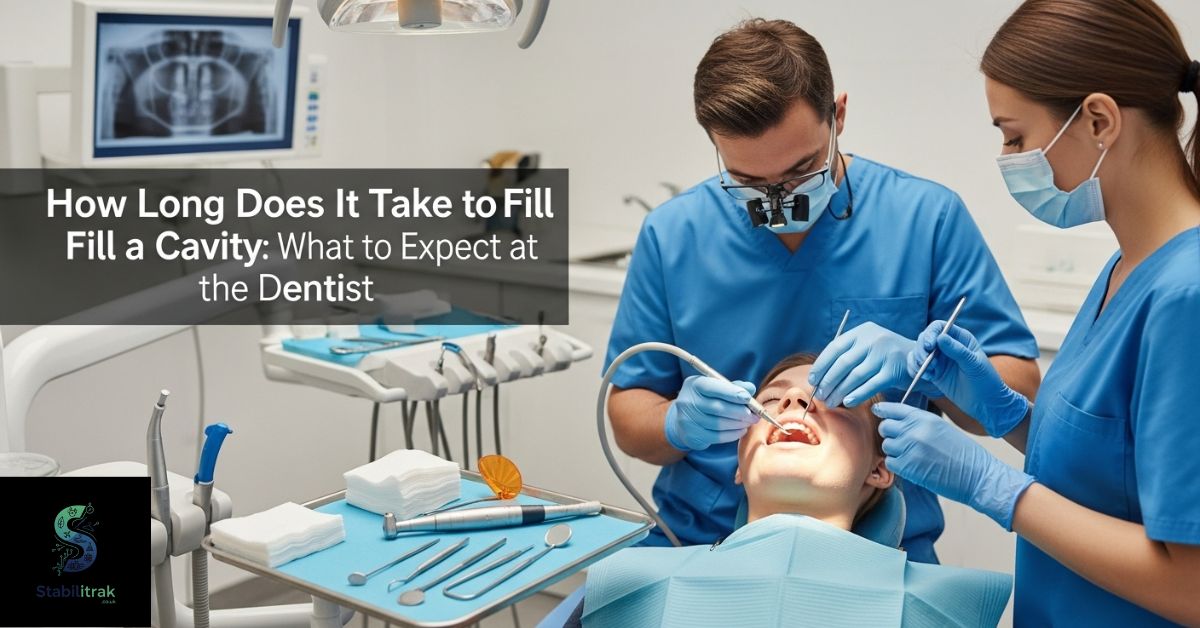Ever sat in the dentist’s chair wondering how long this whole thing will take? You’re not alone. Most people feel a bit nervous or curious about how much time it actually takes to fill a cavity, especially if it’s their first one. The idea of drills and numbness can make anyone anxious, even if the procedure is quick.
In this guide, we’ll walk through exactly how long it can take to fill a cavity, what affects the timing, and what you can expect before, during, and after the appointment. Whether you’re planning your first visit or just want to understand the process better, this post will help you feel more prepared and confident.
The Filling Procedure: What to Expect
Getting a dental filling is one of the most common dental procedures. It’s designed to repair tooth decay and restore your tooth’s natural structure and function. The process starts with a dental examination where your dentist identifies decay, often using X-rays or visual inspection. Once they confirm a dental cavity, the treatment plan begins.
Your dentist will numb the area using a local anesthetic, such as lidocaine or novocaine. This helps ensure the process is pain-free. After you’re numb, they’ll remove the decayed tooth material using a dental drill, laser, or air abrasion tool. This step prepares the area for the filling material, which could be composite resin, amalgam, gold, or porcelain, depending on your needs.
After the cavity is cleaned, your dentist will place the filling in layers, especially for composite fillings. Each layer is hardened with a blue wavelength light that helps the material bond properly to your tooth. Once all layers are set, the filling is shaped and polished so it feels smooth and natural when you bite. The entire cavity filling procedure is straightforward and usually takes about 30 to 60 minutes.
Read More Article: How Long Do Jumping Spiders Live in the Wild and in Captivity?
How Long Does a Cavity Filling Take on Average?

The average dental filling doesn’t take very long. For a single small cavity, the process typically lasts between 20 to 40 minutes. This includes numbing time, drilling, filling, and polishing. However, several factors can affect how long it takes.
For example, if you have multiple cavities, the dentist might work on them during the same appointment, extending the visit to around an hour or more. The size of the cavity also matters. A deep or wide cavity takes longer because it requires more cleaning and additional filling material. On the other hand, a small surface cavity might be done in less than 20 minutes.
Factors to Consider
Several things influence how long it will take to fill a cavity. One major factor is the filling material your dentist uses. Composite resin fillings take longer because they’re placed in layers and cured with light. Amalgam fillings set more quickly but require polishing later. Ceramic or gold fillings might even take two visits if they need to be made in a dental lab.
Another factor is the location of the cavity. Cavities on front teeth are easier to access and fill, while molar cavities are deeper and take longer due to their position. Your dentist’s technique, the tools they use, and even how comfortable you are during the procedure can also affect timing.
Size of the Filling
Small cavities require minimal drilling and filling, making them quick and simple to treat. But large cavities that reach deeper layers of your tooth structure take more time because the dentist has to remove more decay and rebuild more of the tooth. Sometimes, if the decay is close to the nerve, the dentist may use a protective liner before applying the filling to prevent future sensitivity.
For these larger fillings, you can expect the procedure to last up to an hour. This isn’t necessarily bad — it just means your dentist is being careful to ensure the filling bonds well and protects your tooth from future damage.
Number of Surfaces
The time also depends on how many tooth surfaces are affected. A cavity on just one surface takes less time to fill than one that spans multiple sides. For example, a cavity that affects the top and side of a molar will require extra shaping and polishing so that your bite feels even. The dentist must also check your dental impression to ensure the filling fits comfortably.
Number of Fillings
If you have more than one cavity, your dentist might suggest treating them all in one visit. Filling multiple cavities in one appointment can take between one to two hours, depending on their size and location. However, some people prefer to spread it across multiple visits to make it easier to sit through and reduce post-procedure soreness.
Cavity Complications
Sometimes a cavity looks simple, but turns out to be more complex once the dentist starts cleaning. If the decay is too close to the tooth pulp, your dentist might need to perform additional steps to prevent infection or sensitivity. In some cases, a root canal may be required if the decay reaches the nerve. This can add significant time to your appointment, but it is essential for proper tooth restoration and long-term oral health.
Setting Timeline
After your dentist finishes placing the filling, they’ll use a UV light or blue wavelength light to harden it instantly if it’s composite resin. You can usually eat after a few hours once the numbing agent wears off, but some tooth sensitivity to hot or cold foods is normal for a few days.
Amalgam fillings, on the other hand, take longer to set up to 24 hours before they’re fully hardened. During that time, you should avoid hard or sticky foods to prevent damaging the new filling.
How Long Will It Take to Heal?
Recovery after a filling is generally quick. You can return to your normal routine the same day, though mild soreness or sensitivity after filling can last a few days. Using desensitizing toothpaste and avoiding very cold or hot drinks can help. If your bite feels uneven, your dentist can adjust the filling slightly.
Your recovery time depends on the filling material and the depth of the cavity. Most people feel normal again within 24 to 48 hours. If you experience prolonged pain or swelling, it’s best to contact your dentist, as it might indicate a high filling or an infection under the filling.
How Long Will Your Filling Last?
A well-done filling can last several years. Composite fillings generally last 5 to 7 years, while amalgam fillings can last 10–15 years. Gold and ceramic fillings may even last decades with proper care. The key to a long-lasting filling is good oral hygiene and regular dental checkups.
Avoid sticky foods, acidic drinks, and hard candies that can wear down your fillings faster. Maintain a good oral care routine by brushing and flossing daily and using fluoride toothpaste to protect your enamel from plaque buildup and new cavities.
After the Filling: What to Expect
Right after your appointment, your mouth may feel numb for a few hours. This is normal and caused by the local anesthetic. Once the numbness fades, you may notice tooth sensitivity, especially when eating or drinking hot or cold items. This usually improves within a few days as your tooth adjusts to the new filling.
Some patients feel slight discomfort when chewing, but this often goes away as you get used to the filling. If the pain continues, contact your dentist; sometimes a filling just needs a minor adjustment to fit your bite better.
Is Prevention Better Than Cure?
Absolutely. Preventing cavities is always better than treating them. Practicing good oral hygiene, brushing twice a day, flossing regularly, and visiting your dentist every six months can prevent most cavities. Using fluoride toothpaste and avoiding sugary snacks helps protect enamel from acid erosion.
Regular dental cleanings and checkups allow your dentist to catch early signs of decay before they turn into bigger problems. Prevention not only saves you time and discomfort but also reduces the cost of dental treatments in the long run.
What Are the Different Types of Fillings?

There are several types of dental fillings, each with its pros and cons. Composite resin fillings are tooth-colored and look natural, but may wear down faster than other materials. Amalgam fillings are durable and affordable, but more visible. Gold fillings are long-lasting and strong, while porcelain fillings resist stains and blend well with natural teeth.
Your dentist will recommend the best option based on the cavity’s location, size, and your personal preferences. The right material can also affect how long it will take to fill a cavity, as some materials require more layering and curing time.
What to Expect During Your Visit
When you arrive for your dentist appointment, you’ll first undergo a dental examination to confirm the cavity and decide on the filling material. Your dentist may use X-rays to assess the decay’s depth. After numbing the area, they’ll remove the decay, clean the space, place the filling, and polish it. The process is efficient and typically pain-free.
Your dental chair time might vary, but most people spend less than an hour from start to finish. The dentist will ensure your bite feels even before you leave, so your tooth functions comfortably.
How Long Does It Take for a Filling to Set?
The filling setting time depends on the type of material used. Composite fillings harden immediately with a curing light, while amalgam fillings can take up to a full day to reach maximum strength. Your dentist will advise you on when it’s safe to eat and what foods to avoid to ensure the filling sets properly.
Read More Article: How Long Does Botox Last?
How Long Does It Take to Heal After a Filling?

In most cases, healing after a filling is minimal. You might experience slight tooth sensitivity or discomfort for a day or two, especially if the cavity was deep. Avoid chewing directly on the new filling for the first few hours and steer clear of very hot or cold foods. If sensitivity continues beyond a week, schedule a quick dentist consultation to check for adjustments.
How Long Does a Filling Take to Stop Hurting?
Minor soreness is normal right after the anesthetic wears off, but the pain should fade within a few days. If it doesn’t, it could mean your bite is uneven or the filling is too high. A quick adjustment by your dentist usually solves the problem.
Persistent pain, however, may suggest an untreated cavity deeper inside the tooth or an issue with the nerve. Don’t ignore it — catching these problems early prevents bigger complications later.
How Long Do Fillings Last?
The lifespan of a filling depends on several factors, including the material, your oral hygiene, and how much pressure the tooth endures when chewing. With proper care, most fillings last several years before needing replacement. Visiting your dentist regularly ensures small issues are spotted before they turn into larger problems.
The Takeaway
Getting a filling is a quick and simple procedure that protects your teeth and restores your smile. On average, it doesn’t take long, about 30 to 60 minutes, depending on the size of the cavity, filling type, and number of teeth involved. The discomfort is minimal, and the results are worth it.
If you’ve been putting off your dentist visit because you’re worried about how long it will take to fill a cavity, rest assured, it’s one of the easiest and most routine dental procedures. With good oral care and regular checkups, you can keep your teeth strong, healthy, and cavity-free for years to come.
Conclusion
In most cases, it doesn’t take long to fill a cavity, usually between 30 and 60 minutes, depending on how deep or large the decay is. The procedure is quick, safe, and done under local anesthesia to keep you comfortable. Once it’s complete, your tooth is restored, and you can get back to your normal routine almost right away.
Taking care of your oral health after a filling is just as important. Keep up with regular dental checkups, good brushing habits, and flossing to prevent new cavities from forming. A short visit to your dentist today can save you from more serious dental procedures in the future.
FAQs
How long does it take to do one cavity filling?
A single cavity filling usually takes about 30 to 60 minutes, depending on the size and location of the cavity. Simple fillings are often done in less than half an hour.
Is getting a cavity filled painful?
Most fillings aren’t painful because your dentist uses a local anesthetic to numb the area. You might feel some pressure or mild sensitivity afterward, but it usually fades within a few days.
What is the 2-2-2 rule for teeth?
The 2-2-2 rule means brushing your teeth 2 times a day, for 2 minutes each time, and visiting your dentist 2 times a year for cleanings and checkups.
How fast can a cavity be filled?
A small cavity can be filled in as little as 20 to 30 minutes. Larger or multiple fillings may take longer, sometimes up to an hour.
Is $200 for 4 teeth fillings expensive?
No, that’s actually quite reasonable. On average, one filling can cost between $100 and $250, depending on the material and your location.
How soon can I eat after a filling?
If you received a tooth-colored composite filling, you can usually eat right away. For silver (amalgam) fillings, it’s best to wait at least 24 hours before eating hard foods.
How many fillings are normal at 30?
It’s not uncommon for adults around 30 to have a few fillings. The exact number varies based on diet, oral hygiene, and genetics.
Can a cavity get worse in 2 weeks?
Yes, it can. Cavities grow as bacteria continue to break down enamel. Early treatment prevents deeper decay and the need for more complex dental work.
What is the 3-3-3 rule for a toothache?
The 3-3-3 rule suggests taking 3 ibuprofen pills (200mg each) every 3 hours for 3 days to manage toothache pain unless your dentist advises otherwise.
Are cavities due to poor hygiene?
Often, yes. Poor brushing and flossing habits allow plaque and bacteria to build up, which leads to tooth decay. Diet and genetics can also play a role.
What does a stage 1 cavity look like?
A stage 1 cavity may appear as small white or chalky spots on the enamel. At this stage, the enamel is starting to weaken, but it hasn’t yet formed a visible hole.

